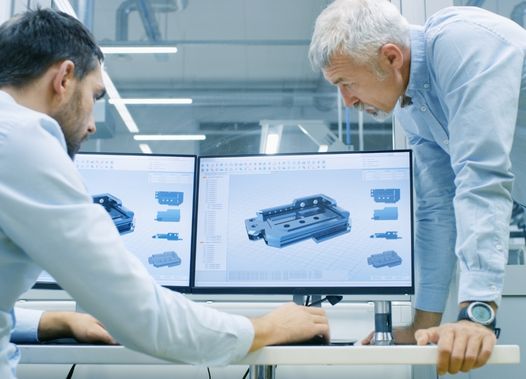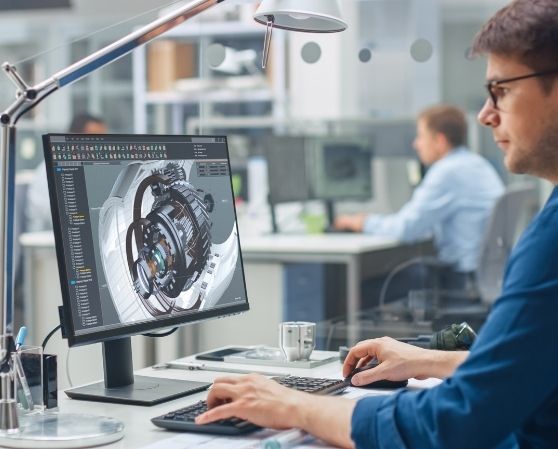Comprehensive Industrial Design Services
From Leading Industrial Design Company in California, USA
Why Hire GID Company as an Industrial Design Company
Our industrial design services include the following:
- Product conceptualization: We work with clients to develop and refine product ideas, ensuring they are viable and marketable.
- Product design and engineering: Our team of designers and engineers work together to create functional and visually appealing product designs while considering factors like manufacturability and cost-effectiveness.
- Prototype development: We create product prototypes to validate designs and test product functionalities before moving to the manufacturing phase.
- Manufacturing support: We can help clients find qualified manufacturers to produce their products.
- Project management: We provide comprehensive project management services to ensure that projects are completed on time and within budget.

Industrial Design Services - What's included?
Team of Best Industrial Product Designers in California, USA

- Ideation & Concept Development: Brainstorm innovative concepts with you. Conduct user research & market analysis to identify opportunities. The collaborative approach ensures commercially viable solutions.
- Industrial Design & Engineering: Translate the chosen concept into a detailed design. Create 3D models & renderings to bring your product to life. Refine design for ergonomics, user experience, and manufacturability.
- Prototyping & Testing: Create functional prototypes using 3D printing & CNC machining. Conduct rigorous testing to assess functionality & user satisfaction. Refine design based on feedback to meet all requirements.
- Manufacturing Support: Connect you with reputable manufacturers. Assist in selecting manufacturing processes & materials. Oversee manufacturing to guarantee adherence to specifications.
Not Sure Where To Start?
Call JIM
The Impact of Industrial Designing Services
Leading Industrial Design Company in California, USA
Industrial Design Services play a crucial role in transforming your product ideas into market-ready solutions that can significantly impact your product's success and your overall business growth. By bridging the gap between creativity and functionality, industrial development ensures that your product not only meets a market need but also exceeds user expectations.
User-Friendly Design
Industrial design prioritizes user needs, resulting in intuitive and enjoyable products that boost customer satisfaction and loyalty.
Optimized Functionality
Collaboration between designers and engineers ensures exceptional product performance, exceeding user expectations and creating a market edge.
Market Standout
Eye-catching design, innovative features, and unique differentiation set your product apart, generating excitement and driving sales.
Cost-Efficient Production
Early focus on manufacturability minimizes production costs, reduces waste, and streamlines the path to mass production.
From Idea to Reality - Watch How We Do It!

Why Choose GID Company for Industrial Designing Services?
Best Industrial Design Firm in California, USA
GID Company stands out as your premier partner for Industrial Product Designing due to our unwavering commitment to excellence, innovation, and client success. We bring a unique blend of creativity, technical expertise, and industry experience to every project, ensuring your product vision is realized in a way that exceeds expectations.
Proven Expertise
Our team boasts extensive experience across diverse industries, enabling us to tackle complex challenges and deliver tailored solutions that align with your specific goals.
Collaborative Approach
We believe in open communication and collaboration, working closely with you throughout the entire development process to ensure your vision is fully integrated into the final product.
Cutting-Edge Technology
We utilize state-of-the-art design tools and technologies, including 3D modeling, prototyping, and simulation, to streamline the development process and accelerate time-to-market.
Client-Centric Focus
Your success is our priority. We are dedicated to providing exceptional service, exceeding your expectations, and building lasting partnerships based on trust and mutual respect.
Our Areas of Industrial Designing Expertise
From Best Industrial Product Design Agency in California, USA
GID Company's Industrial Product Design Services spans a wide array of industries and product categories. Our multidisciplinary team of Industrial Designers possesses the skills and experience to address unique challenges and deliver innovative industrial design services and solutions across various sectors. We are particularly adept at developing the following types of products:

Let's Bring Your Product Vision To Life
Don't let your vision remain just an idea. Contact us today and let's start building the future of your product.
Frequently Asked Questions - FAQs
-
What are the four types of industrial design?
The four main types of industrial design include product design, Industrial design, transportation design, and consumer electronics design. At GID Company, we specialize in Industrial Product Design Development that brings innovation to each of these areas, ensuring that your product is functional, aesthetically pleasing, and market-ready.
-
What does industrial design do?
Industrial design focuses on creating and developing concepts for manufactured products that are both functional and visually appealing. GID Company’s Industrial Product Design Development service turns your ideas into reality by blending creativity with technical precision, ensuring your product is both user-friendly and cost-effective to produce.
-
How long does the industrial design development process typically take?
The timeline for industrial design development varies depending on the project’s complexity, scope, and specific requirements. However, at GID Company, we prioritize efficiency without compromising quality. We work closely with you to establish realistic timelines and milestones, ensuring timely delivery while maintaining the highest standards of design and engineering.
-
What industries does GID Company cater to in terms of industrial design development?
GID Company has a proven track record of serving a wide range of industries, including consumer electronics, medical devices, industrial equipment, and more. Our versatility allows us to adapt our expertise to the unique demands of each industry, delivering tailored solutions that address specific challenges and opportunities.
-
Can GID Company assist with manufacturing after the design phase is completed?
Absolutely! We offer comprehensive support throughout the entire product development lifecycle, including manufacturing assistance. We can connect you with our network of trusted manufacturing partners, help you select suitable materials and processes, and even oversee production to ensure your product is manufactured to the highest quality standards.
-
How does the Mechanical Product Development process work?
The mechanical product development process typically starts with idea generation and concept design. Engineers then create detailed drawings, models, and prototypes. These are tested and refined iteratively to ensure the product’s functionality, durability, and manufacturability before it goes into production.
-
What sets GID Company apart from other industrial design development firms?
At GID Company, we pride ourselves on our collaborative approach, commitment to innovation, and dedication to client success. We combine creative flair with technical expertise, ensuring your product not only looks exceptional but also functions flawlessly. Our client-centric focus means we prioritize your needs and goals, working tirelessly to deliver solutions that exceed your expectations.
-
What are the 6 phases of the industrial design process?
The six phases of the industrial design process are:
- Research and Analysis
- Concept Development
- Design Refinement
- Prototype Development
- Testing and Evaluation
- Production Planning
GID Company excels in each phase, ensuring that your product moves smoothly from concept to market through our expert Industrial Design Development services.
-
What are the 4 phases of industrial development?
The four phases of industrial development are:
- Conceptualization
- Design and Development
- Manufacturing
- Market Launch
At GID Company, we guide you through each stage of Industrial Product Design Development, offering tailored solutions to bring your product successfully to market.
-
What three requirements must industrial designers plan for?
Industrial designers must consider functionality, aesthetics, and manufacturability in their designs. GID Company’s Industrial Design Development services focus on these key requirements, ensuring your product not only looks great but also performs efficiently and can be manufactured at scale.















